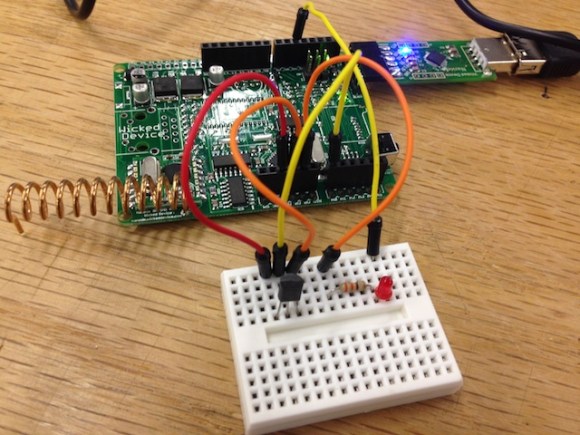
Getting a device on the internet is great – but what if you want to monitor multiple wireless sensors? The [WickedDevice] crew have been publishing a tutorial series focusing on just that. Their weapon of choice is the Nanode, an Arduino based wireless sensor system we’ve seen a few times in the past. So far the first and second parts have been posted up. Part one starts with an explanation of the Arduino and Nanode platform, and takes us through connecting the Nanode to a wireless temperature sensor. Part two walks through the hardware and code changes to add multiple wireless sensors to the system. Part three will focus on getting the entire network up on the internet, and piping data onto the Xively data hosting site.
This tutorial does begin a bit on the basic side, covering the installation of the Arduino software environment. This may seem a bit simplistic for some of our readers, but we think this type of tutorial is necessary. It helps ‘newbies’ get started down what could otherwise be a difficult path. For more advanced readers, it’s easier to skip past steps you already know than it is to try to hunt down information that isn’t there.















It’s a shame the people behind the Nanode decided to move away from the through-hole component based design they started out with. I have a few of those devices, and there is something decidedly satisfying about turning a bag of parts and an empty PCB into a functioning device. Not to mention the through-hole version was a lot more hackable itself.
These days everybody does SMD. I am designing SMD circuits exclusively because it has become much easier and faster to solder them than through-hole. On top you dont need to drill a lot in PCBs and the parts are much easier to stock.
Maybe you should attend one of the widely available SMT workshops ;-)
Nanode Gateway uses low power 433MHz wireless to form a bidirectional link between the internet and remote sensors. Within the home and garden environment the Gateway has a range exceeding 300 feet. Now it is possible to connect sensors all around your home and garden back to the internet, and control external devices using a web browser interface.